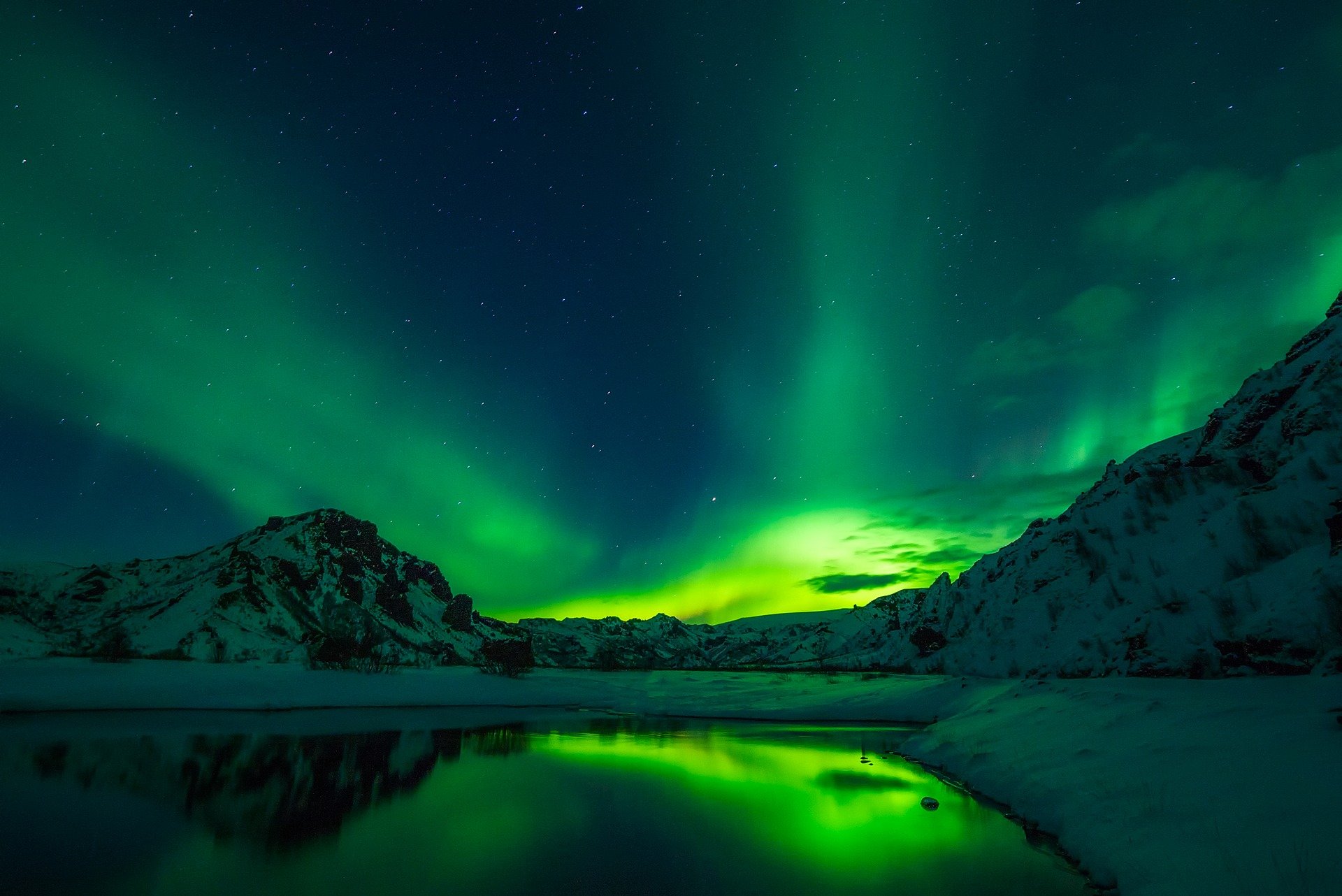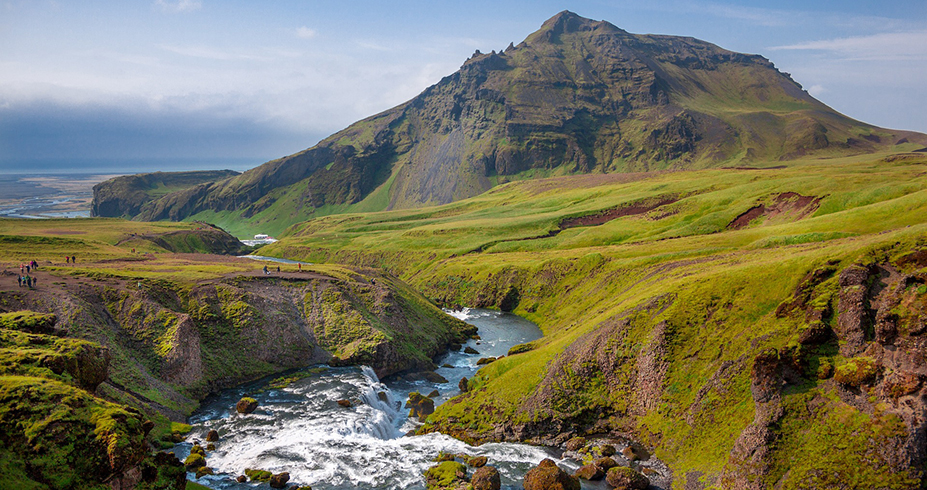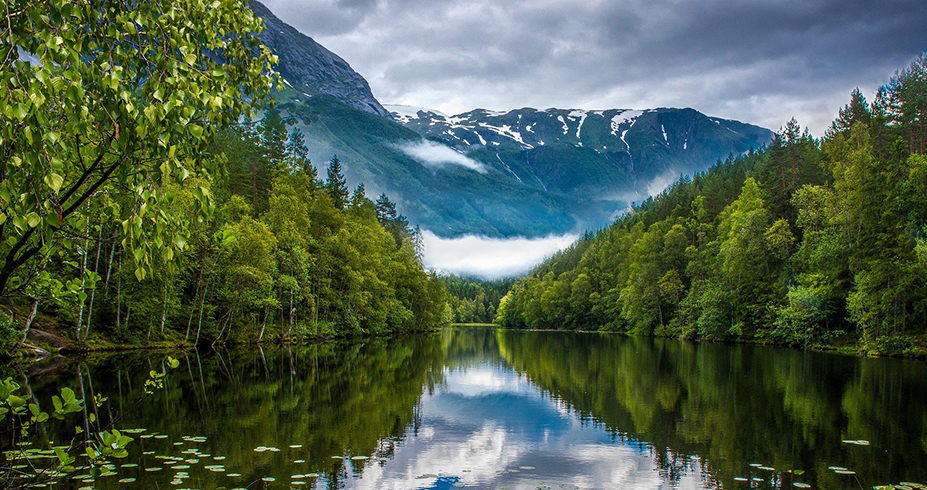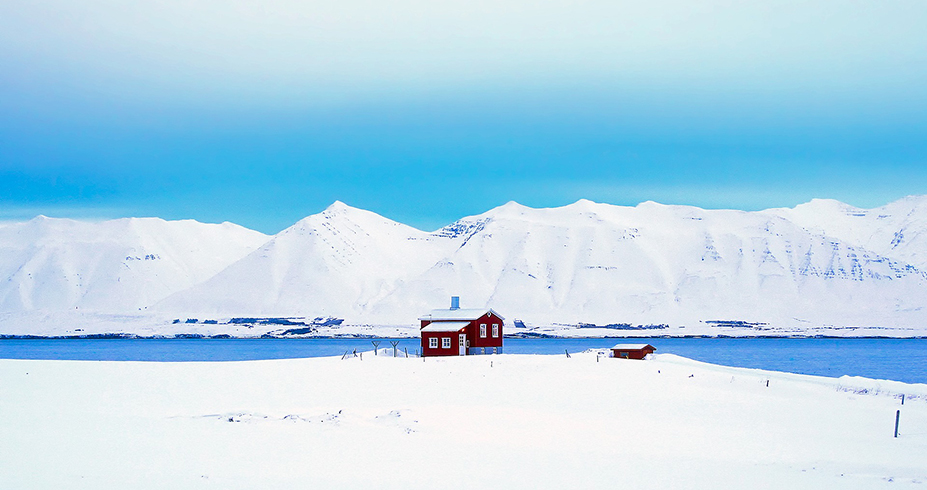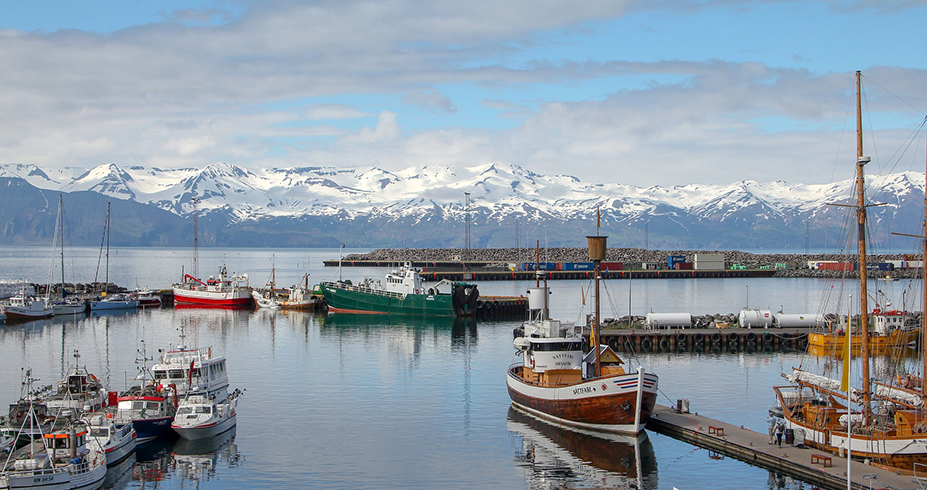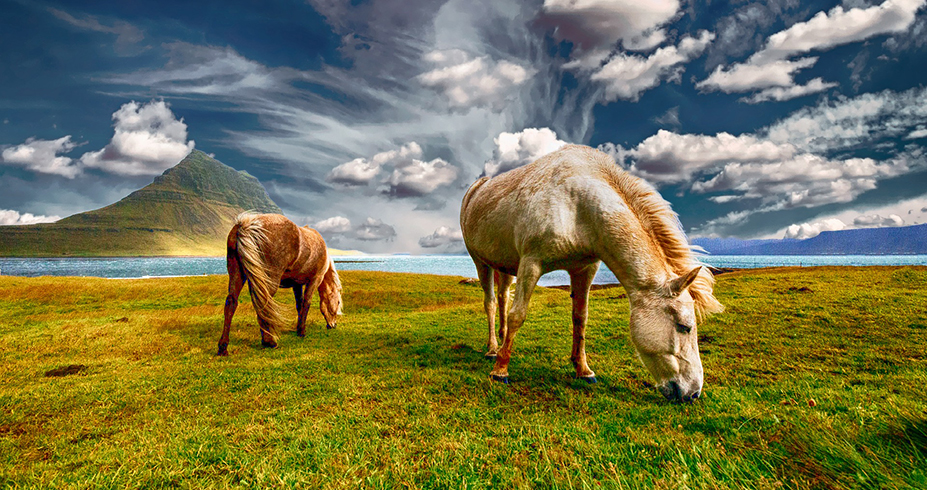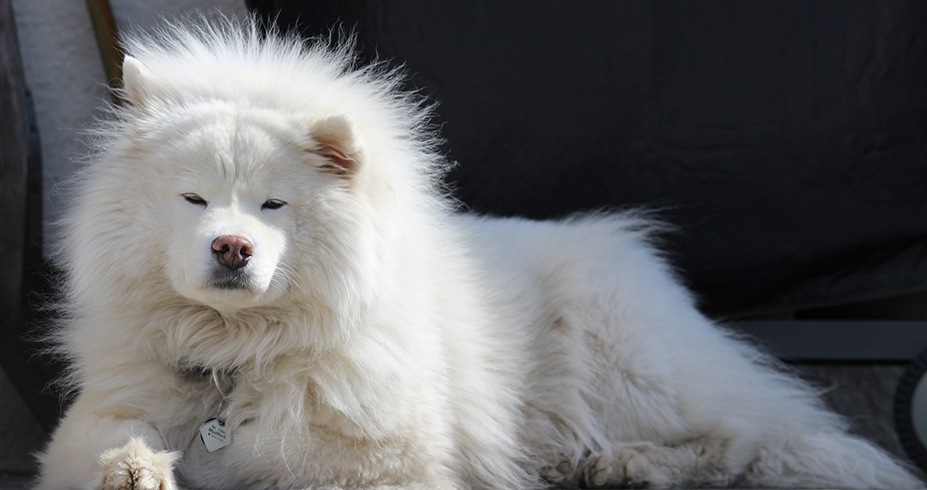Don’t miss next deals! Sign up for email alerts. Subscribe to #europe alerts »
Currency – Icelandic króna (kr)
Language – Icelandic, Danish and English are also spoken
Vaccine – No vaccinations are required.
Electricity – 230V. 50 Hz. Power plugs and sockets are of type F
EMERGENCY TELEPHONES
National Police: 112
Medical emergency: 112
Iceland is located north of the Atlantic Ocean, below the Arctic Circle. The coast is very steep. The most important inlets on the west coast are Faxaflói (Faxa fjord) and Breidafjördur (Breidha fjord). The terrain is geologically recent volcanic in origin, consisting primarily of uninhabited lava plateaus dotted with mountainous points.
It also has many small lakes and fast-flowing rivers, the majority of which are glacial in origin. The mid-Atlantic ridge, where Iceland is located, is one of the major faults in the earth’s crust. As a result, it is one of the most tectonically active locations on the planet, with numerous volcanoes and hot springs.
The southern coast is abundant in grass and heather, which provide pasture for livestock, primarily sheep. The only fruits that grow on the island are blueberries and the fruits of a family of empetraceas.
The island is home to over 100 bird species, many of which are aquatic, such as the whooper swan and various types of ducks; the duck colonies on Lake Mvatna in the north are the world’s largest and most diverse.
The island offers a variety of excursions, including those devoted to bird watching that are not available anywhere else in Europe, as well as glacier excursions and cruises around the world. Renting a boat is an option. Cycling through the countryside is another popular activity, but the main attraction is the Icelandic swimming pools.
TOURIST SITES OF ICELAND
Reykjavik – Iceland’s capital, Reykjavik, is both Europe’s northernmost and smallest city. Reykjavik is Iceland’s economic, political, and social center. Everything that takes place in Iceland takes place here. It’s also a smoke-free city with a lovely lake in the heart of the historic district. The bay known as Smoky Bay, named after the first Icelandic colonizer Ingolfur Arnalson, is one of its major attractions. The true heart of the city can be found in the Hlemmur Square, which is located in the far east of the city center. The most commercial street in the capital is Laugavegur.
It is recommended that you make a visit to the National Gallery, which houses works by Icelandic artists as well as the Arnarhóll statue, which commemorates the country’s first settler.
The Lake Tjörnin in the center of the city is visited by many birds. Taking the pier route leads to the peninsula of Örfirisey, which is dominated by the mountain of Esja. The walk along the piers is very nice, and you can stop by some of the nearby fish processing facilities.
Borgarfjöröur Bay – Reykholt is home to the great historian Snorri Sturluson as well as the massive Surtshellir and Viögelmir Caves. The Lava Falls (Hraunfossar) are nearby, as is the Barnafossar, which has bizarre rock formations. Hsafell Park, a densely wooded summer camp nearby, is close by.
Snaefellsnes Peninsula – It extends north of Borganes and is densely forested, with many lakes and streams. A natural pool can be found in Lysuhóll. The Boahraun lava field is just a few kilometers away. The road passes through towns like Arnastapi and Hellnar, which are known for their vibrant colors.
The Snaefells Glacier, is located at the end of the island. Lafsvik is a good base for climbing the volcano, located near the coast and to the north of the peninsula. The road continues to Stykkishólmur, from which the neighboring islands can be reached.
Awesome Fjords – Deep fjords cut the west coast into a line. The Westfjords peninsula, combined with the narrow isthmus territory, is Iceland’s most rugged and remote region. The Westfjords Maritime Museum, one of Iceland’s best museums, is located in Isafjörur, the most important capital of the Western Fjords. The highest concentration of bird species in the North Atlantic Ocean can be found on the cliffs of Látrabjarg and around its 12 kilometers, making it a true paradise for nature lovers.
North Iceland – The world’s largest lava fields can be found in Iceland’s north. The area’s volcanoes are still active. The first town we come across is Blönduós, from which you can take a tour of the surrounding area. Vomyri, which has an 18th century church, is about 50 kilometers away.
Akureyri – Don’t miss Akureyri, a small town with almost constant sunshine and snow on the peaks of its mountains. On the streets of this town, you can see an entire world of gardens and flowers that give it a unique color. The Natural History Museum, the church, the Arctic Botanical Garden, the Folklore Museum, and the Laxdal House, the city’s oldest, dating from the 18th century, are all recommended. To the south, the mountain Slur climbs. You can also see Kerling Peak. There are also cruises that connect the island to the nearby islands.
Picturesque Villages – Some picturesque villages such as Kristnes, which was home to the region’s first colonists, Grund, which has a small church, Saurbaer, which has interesting architecture, and Möoruvellir, which has a medieval alabaster altarpiece. We pass through the Valley of the Three Stumps (Fnjóskadalur), which has glacier formations, on our way back to Akureyri. If you continue on that path, you will come to the Forest of Trunks (Vaglaskógur), which is densely forested. There are plenty of areas of geothermal sources, but if he truly wants visitors to enjoy the spectacle of the waters’d better not miss the waterfalls of Gooafoss and of Dettifoss, with its 44 meters of waterfall make them the largest in Europe.
Eastern Region – Deep fjords are separated by steep mountain peaks in this mountainous region. To the north is Lake Lögurinn, where the town of Egilsstadir, the area’s main city and communications hub, is located. From there, you can travel around the area and visit the Hallormsstaour Forest Reserve.
Bakkageroi is situated further north. The scenery along the road is indescribable. Returning to Egilsstadir, travel south to the towns of Neskaupstaour and Eskifjörour, both of which are situated on beautiful fjords. Jökulsárlón, a 100-meter-deep glacial lake, is a must-see. Its views can be enjoyed from a boat, and it is full of floating icebergs.
The majestic Gullfoss Falls, with a 32-meter free fall, and Vatnajökull, Europe’s largest glacier, are also in the east. The Skaftafell National Park, Iceland’s largest, is worth mentioning. Hvannadalshnkur, Iceland’s highest mountain, towers over the breathtaking landscape. Make sure to see Svartifoss, the Black Waterfall, and Sel, a typical little cottage.
South Iceland – It is the destination with the most natural attractions, as evidenced by its vast black sand beaches, lava fields, geysers like Haukadalur, hot springs, and active volcanoes like Hekla.
Golden Circle – In the south, however, you can complete the almost compulsory circuit for any visitor: the so-called “Golden Circle,” which includes Thingvellir and Gullfoss as major stops along the way. The Thingvellir fields are home to Iceland’s biggest lake and a valley carved out by a huge fault line. The Strokkur Geyser, which spews boiling water or steam up to a height of 20 meters every five minutes or so, is one of the geothermal fields. The Golden Waterfall, Gullffos a glacial river rushes over the edge of a fault and into a deep canyon, making it one of the most spectacular in the world.
Pingvellir National Park is a sacred place for Icelanders because of historical events that occurred there centuries ago. It is situated on Iceland’s biggest lake. Don’t miss Almannagjá, the humanity’s throat, and Lögberg, the law’s rock. A church and a house stand in front of it, serving as lodging for political figures visiting the country.
Not far from Flosi is Flosiiagjá, a place where it is customary to make a wish. It’s also visible in the Oxara Waterfall area. Go to Laugarvatn, the Lake of the Springs, if you want to take a relaxing bath.
DAILY LIFE
Swimming, chess, reading, and theater are all popular activities among Icelanders. They normally take cod oil twice a day. Another tradition is to use the father’s first name as a surname, with the suffix “son” or “dottir” depending on whether the child is a son or a daughter.
Meanwhile, traditional Icelandic legends speak of the Huldufolk (or hidden people), mythological creatures who live in rocks and forests and include elves, gnomes, trolls, and goblins. Their existence is so ingrained in their culture that road construction plans are still being changed to accommodate their small dwellings.
IN BARS AND RESTAURANTS
Although Iceland is not known for its gourmet cuisine, there are a few dishes that are uniquely Icelandic, such as sheep head, lamb soup, and plokkfiskur (fish stew). However, restaurants serving foreign or themed cuisine are strewn about the city.
TIPS
Tipping is not given in Iceland. The service and VAT are always included in the prices.
RELIGION
Evangelical Lutherans of Iceland (93.1%)
Other Protestant sects (3.7%) and Catholics (0.7%)
HOLIDAYS
January 1 – New Year
Thursday and Good Friday variables
Variable Easter Monday
May 1 – Labor Day
June 5 – Sailors’ Day
Variable Monday Pentecost
June 17 – National Holiday
December 24 and 25 – Christmas
December 26 – Saint Stephen
December 31 – New Year’s Eve
CLIMATE
The climate is oceanic and not overly harsh, with mild winters and cool summers, thanks to the influence of the Gulf current. The average summer temperature is around 10 degrees, though it can drop to 2 degrees in the coldest and highest parts of the country. Rain and winds are common, but only for a brief duration.
The most common ingredient is fish. The majority of the restaurants have a diverse menu that includes everything from the most common marine fish and shellfish to wild and farmed salmon and trout. The cattle are fattened without the use of hormones, and the lamb is allowed to roam freely in the highlands during the summer, which gives the meat a gamey flavor. In season, normal game such as partridge and reindeer are also available.
TYPICAL DISHES
Reno – Reindeer is one of Iceland’s popular dishes eaten in the middle of the hunting season
Hákarl (Fermented Shark) – Small pieces of shark that are eaten after fermenting
Plokkfiskur (Fish Stew) – Fish stew made with potatoes, onions and bechamel sauce
Kjotsupa (Traditional Lamb Meat Soup) – Lamb meat soup accompanied with various herbs and vegetables
Hardfiskur (Dried Meat) – Small and fine pieces of dried fish that can belong to cod, whiting and even halibut
Hangikjöt – Slices of smoked lamb meat covered in bechamel sauce
Pylsur (Hot Dogs) – Piece of bread stuffed with a sausage, pieces of onion and various unusual seasonings such as apple ketchup and remolaði
Fiskibollur – Meatballs made from fish
Graflax – Salmon in small slices , which has been cured in salt, sugar and dill
Porramatur – Wide selection of different meats and fish such as cod. These are generally accompanied with rye bread, butter and the traditional Brennivín liqueur
Skyr – Curd
BEVERAGES
Among the drinks is brennivn, a local brandy known as the “Black Death” because it is seasoned with caraway seed
LOCAL FRUITS
Blueberries
AIR TRANSPORT
Most passenger and freight flights to and from Iceland use the Keflavik Leifur Eirksson International Air Terminal (48 km from Reykjavik). The airport is open 24 hours a day. Air Iceland, Iceland’s national airline, sells four, five, or six-leg passes with the option of stopping in between. This service is available all year.
There is no minimum time limit, but the journey must be completed within 30 days. For sale at all Icelandair offices. Icelandair and BSI Travel offer an Air Bus Rover pass, which combines air service with a coach service. One way by plane, one way by coach, or the other way around. From the 1st of June to the 30th of September. The dates do not have to be closed, but the trip should not exceed 30 days.
BOAT TRANSPORT
During the summer, Smyril Line company runs a weekly service carrying passengers and vehicles between various points in Scandinavia. Inland destinations are also served by ferries.
BUS TRANSPORT
There is a significant bus network that connects almost every part of the country, including the inland areas, and provides a large number of well-organized routes. Those under the age of four travel for free; children aged four to eight receive a 50% discount, and those aged nine to eleven receive a 25% discount. The “Omnibus Passport” entitles you to unlimited travel for 1, 2, 3, or 4 weeks.
The “Full Circle Passport” allows you to travel around the country for as long as you want. Both tickets entitle the holder to discounted prices on scheduled excursions and lodging at tourist centers.
RAILWAY TRANSPORT
Except for the express service between Istanbul and Ankara, Turkish trains are not very efficient in the interior of the country, despite being cheap. They are sluggish and cramped.
ROAD NETWORK
The majority of the country’s mountainous roads and highways, as well as many parts of the general highway, have gravel cladding, despite the fact that it is mostly paved. These roads’ surfacing is frequently loose, particularly near the edges, so drive carefully and slowly when passing another vehicle. Mountain roads are often narrow and unsuitable for running.
Many bridges are too narrow to allow two cars to cross at the same time. Apart from the fact that they are not paved, these roads are often winding.
DRIVING
Because of Iceland’s tranquility, its small geographic area, and the beauty of its landscapes, accidents are common, with the majority of them having serious consequences. As a result, it is recommended that you: – avoid driving at night and take frequent breaks; – strictly adhere to all traffic signs and speed limits (50 km in urban areas, 80 km on gravel roads and 90 km on asphalt).
Usually, there are no warning signs that it is time to slow down. Speeding penalties are extremely high. Driving with low beams is required 24 hours a day. Before starting your journey, learn about the state of the roads and the weather forecast. If you have consumed alcohol, you are not permitted to drive a car. The consequences for this infraction are serious.
The use of a seat belt is required in both the front and back seats. Outside of the island’s major ring roads, gravel tracks are common. They are not suitable for fast driving since driving on gravel can have the same effect as driving on ice, with a high risk of losing control of the vehicle.
RENTAL CARS (We recommend reserving us in advance):
In Iceland, there are various car rental agencies. Because the roads are not very good, it is recommended that you choose an terrain car.
RENT A CAR at Reykjavik International airport >>>
TAXIS
There are numerous taxi companies in Reykjavik. Some companies offer discounted trips to Keflavik International Airport. The following are the major companies:
SR taxis: 5610000
Borgarbílastöðin: 5522440
Hreyfill-Bæjarleiðir: 5885522
BSH taxis: 5550888
Don’t miss next deals! Sign up for email alerts. Subscribe to #europe alerts »

